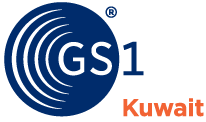GS1 Barcodes
Barcodes are symbols that can be scanned electronically using laser or camera-based systems.
They are used to encode information such as product numbers, serial numbers and batch numbers. Barcodes play a key role in supply chains, enabling parties like retailers, manufacturers, transport providers and hospitals to automatically identify and track products as they move through the supply chain.
GS1 manages several types of barcodes. Each is designed for use in a different situation.
GS1 Barcodes
Barcodes are symbols that can be scanned electronically using laser or camera-based systems.
They are used to encode information such as product numbers, serial numbers and batch numbers. Barcodes play a key role in supply chains, enabling parties like retailers, manufacturers, transport providers and hospitals to automatically identify and track products as they move through the supply chain.
GS1 manages several types of barcodes. Each is designed for use in a different situation.

